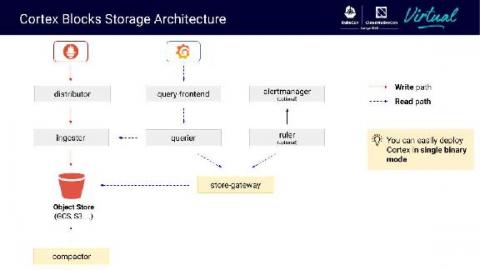Operations | Monitoring | ITSM | DevOps | Cloud
Microservices
Is your microservice a distributed monolith?
Your team has decided to migrate your monolithic application to a microservices architecture. You’ve modularized your business logic, containerized your codebase, allowed your developers to do polyglot programming, replaced function calls with API calls, built a Kubernetes environment, and fine-tuned your deployment strategy. But soon after hitting deploy, you start noticing problems.
Monitoring infrastructure and microservices with Elastic Observability
Trends in the infrastructure and software space have changed the way we build and run software. As a result, we have started treating our infrastructure as code, which has helped us lower costs and get our products to market more quickly. These new architectures also give us the ability to test our software faster in production-like deployments, and generally deliver more stable and reproducible deployments.
Run .NET Applications in Azure Spring Cloud Using Steeltoe-Now in Public Preview
Fresh off the exciting announcement of Azure Spring Cloud’s general availability at SpringOne, today we are happy to announce the public preview of Steeltoe .NET support. Azure Spring Cloud is a fully managed service for Spring Boot—and now Steeltoe .NET—apps. As a native Azure service, it is operated by Microsoft. But VMware has partnered closely with Microsoft in the development of the service and fully supports Microsoft in its operation of Azure Spring Cloud.
Carta: Transitioning to microservices and deploying code faster with Datadog
6 Steps to Successful Mainframe Modernization
Mainframe modernization is typically viewed as a multiyear, transformational journey that requires long planning phases and a massive buildout before any returns can be realized.
Node.js Microservices: Developing Node.js Apps Based On Microservices
Node.js application developers, in the ever-evolving business landscape, enjoy tangible advantages while incorporating microservices in Node.js apps development. The microservice architecture, or microservices, is a distinct method of software systems development, which attempts to create modules that are single-function, with well-defined operations and interfaces.
Deploying Citrix ADC with Service Mesh on Rancher
As a network of microservices changes and grows, the interactions between them can be difficult to manage and understand. That’s why it’s handy to have a service mesh as a separate infrastructure layer. A service mesh is an approach to solving microservices at scale. It handles routing and terminating traffic, monitoring and tracing, service delivery and routing, load balancing, circuit breaking and mutual authentication.
Introducing a more efficient way to re-provision microservices infrastructure
Ocean by Spot provides key functions that deliver a serverless infrastructure experience for containerized applications by taking care of auto scaling, right sizing and pricing optimization. These features enable users to focus on their applications while the infrastructure is automatically provisioned and managed by Ocean.
[KubeCon + CloudNativeCon EU recap] Getting some Thanos into Cortex while scaling Prometheus
Yesterday at KubeCon + CloudNativeCon EU, Grafana Labs software engineer Marco Pracucci, a Cortex and Thanos maintainer, teamed up with Thor Hansen, a software engineer at Hashicorp, to give a presentation called “Scaling Prometheus: How we got some Thanos into Cortex.” In their talk, the pair discussed a new storage engine they have built into Cortex, how it can reduce the Cortex operational cost without compromising scalability and performance, and lessons learned from running Cortex at s











